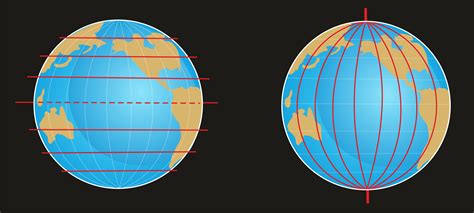Surveying Bearings: Guiding Your Journey with Precision
In the realm of surveying, bearings hold paramount importance, providing the compass for accurate measurements and navigation. From vast construction sites to intricate architectural plans, surveying bearings guide professionals in determining the precise direction and location of points on the ground.
Understanding Surveying Bearings
Surveying bearings are angles measured clockwise from a designated reference line, typically referred to as the meridian. The most common reference meridian used in surveying is True North, which aligns with the geographic North Pole.
Bearings can be expressed in two primary formats:

-
Degrees, Minutes, Seconds (DMS): This format, also known as sexagesimal bearings, provides the angle in degrees, minutes, and seconds. For example, a bearing of N 45° 23' 12" E indicates True North plus 45 degrees, 23 minutes, and 12 seconds eastwards.
-
Azimuth: Azimuth bearings represent angles measured clockwise from True North, expressed in degrees only. For instance, a bearing of 45° AZ indicates an angle of 45 degrees in a clockwise direction from True North.
Types of Surveying Bearings
Surveying bearings come in various types, each serving a specific purpose:

-
True Bearing: The angle measured from True North.
-
Magnetic Bearing: The angle measured from Magnetic North, which aligns with the Earth's magnetic field.

-
Grid Bearing: The angle measured from Grid North, a reference line established for a specific area.
-
Assumed Bearing: A bearing assumed for a particular boundary or line, typically in the absence of reliable data.
Surveying Bearings in Practice
Surveying bearings find widespread application in diverse industries:
-
Land Surveying: Determining the boundaries of properties, easements, and other parcels of land.
-
Construction: Establishing the alignment and location of buildings, roads, and other infrastructure.
-
Engineering: Designing bridges, tunnels, and other structures that require precise measurements and alignment.
-
Architecture: Planning the layout and orientation of buildings, ensuring efficient use of space and alignment with surrounding structures.
Benefits of Using Surveying Bearings
The use of surveying bearings offers several advantages:

-
Accuracy: Bearings provide precise angles that ensure accurate measurements and the correct positioning of structures and boundaries.
-
Compatibility: Bearings are compatible with various surveying instruments and technologies, facilitating seamless data transfer and integration.
-
Standardization: The use of standardized bearing formats ensures consistency and clarity in surveying data and communication.
Challenges in Surveying Bearings
Despite their benefits, surveying bearings present some challenges:
-
Magnetic Declination: Magnetic bearings can be affected by magnetic declination, the difference between True North and Magnetic North, which varies based on location and time.
-
Instrument Errors: Inaccuracies in surveying instruments, such as theodolites or total stations, can result in errors in bearing measurements.
-
Environmental Factors: Environmental factors, such as wind, temperature, and magnetic interference, can influence the accuracy of bearing measurements.
Tips and Tricks for Surveying Bearings
To ensure accurate surveying bearings, consider these tips:
-
Calibrate Instruments Regularly: Regular calibration of surveying instruments, including theodolites and total stations, is crucial for maintaining accuracy and minimizing errors.
-
Consider Magnetic Declination: Adjust magnetic bearings for magnetic declination to obtain true bearings. Refer to local magnetic declination maps or online calculators for accurate values.
-
Minimize Environmental Impacts: Conduct bearing measurements during stable weather conditions and away from magnetic interference to minimize the impact of external factors on accuracy.
Potential Drawbacks of Using Surveying Bearings
While generally reliable, surveying bearings have a few potential drawbacks:
-
Complexity: Surveying bearings can be complex, especially when dealing with azimuth bearings or grid bearings that require additional calculations.
-
Interpretation Errors: Misinterpreting bearing formats or applying them incorrectly can lead to significant errors in surveying measurements.
-
Equipment Limitations: Some surveying instruments may have limitations in measuring certain types of bearings or angles, which can affect the accuracy of the results.
Comparison of Pros and Cons
| Pros |
Cons |
| Accuracy |
Complexity |
| Compatibility |
Interpretation errors |
| Standardization |
Equipment limitations |
Inspiring Stories
Story 1
A surveyor was tasked with determining the boundaries of a large farm. Using surveying bearings, he meticulously measured the angles and distances, ensuring the accuracy of the boundary lines. However, he discovered that a portion of the farm had been encroached upon by a neighboring landowner. Armed with precise bearing data, the surveyor confronted the neighboring landowner, providing irrefutable evidence of the boundary violation, leading to a resolution of the dispute.
Lesson: Surveying bearings provide tangible proof in property disputes, ensuring clarity and resolution.
Story 2
During the construction of a high-rise building, a surveyor was responsible for establishing the exact alignment of the columns that supported the structure. Using precision bearings, the surveyor ensured that the columns were perfectly aligned, creating a solid foundation and ensuring the stability of the building.
Lesson: Surveying bearings underpin the integrity of structures, guaranteeing safety and longevity.
Story 3
An architect was designing a sprawling complex of buildings for a university campus. By incorporating surveying bearings into the design process, the architect ensured that the buildings were optimally oriented for energy efficiency, maximizing natural lighting and minimizing heating and cooling costs.
Lesson: Surveying bearings empower architects to plan sustainable and environmentally conscious designs.
Conclusion
Surveying bearings form the cornerstone of accurate measurements and navigation in various industries, providing a precise framework for determining the direction and location of points on the ground. By understanding the types, applications, benefits, and limitations of surveying bearings, professionals can harness this powerful tool to achieve successful project outcomes.
References
National Geodetic Survey: Surveyors and Mapping

